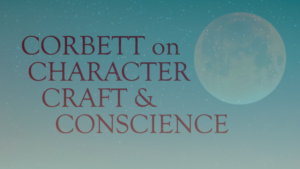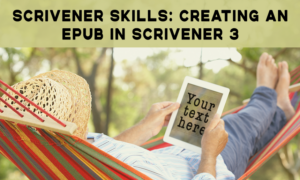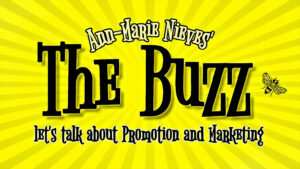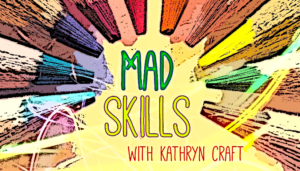Business
In a recent email from author Emily Kimelman, she laid out a whole new model for self-publishing that I found especially intriguing, and I thought the Writer Unboxed community would as well.
Emily is the best-selling author of two series—the Sydney Rye mysteries and the Starstruck thrillers—as well as the Kiss Chronicles urban fantasy series under the name Emily Reed. Spending her early years in the Soviet Union (her father was a foreign correspondent for the Philadelphia Enquirer), she caught the wanderlust bug at a young age and has traveled the world from Mongolia to Costa Rica to Spain and beyond, and she often bases her books on her experiences abroad.
(Personal note: Emily is also my wife’s best friend, and they’ve been “sisters from different misters” since they met at age twelve while attending The Baldwin School in Bryn Mawr, Pennsylvania.)
I recently invited Emily to share her publishing experiences and her unique new venture with our readers.
Why did you originally decide to self-publish?
In 2005, I was in my twenties and coming up with my life plan.
I wanted to write mystery novels because I enjoyed reading them, and writing them seemed like the most fun way to make a living.
I researched how to support myself as an author and decided I’d write a stunningly good book, get an agent, then a publisher. Then they’d take it from there while I wrote in cafes around the world with my dog sleeping peacefully at my feet and my fingers clacking away on my keyboard.
I did write a stunningly good book (it took 5 years), and I did get an agent …but the rest didn’t fall into place until I became my own publisher.
I’m entrepreneurial by nature and watched the self-publishing market emerge from a shameful little corner of the internet into a powerful force traditional publishers were ignoring. So in 2011, when my agent still hadn’t sold my book, I figured I had nothing to lose by going indie.
How have you monetized your books – in particular, share with our readers “how it works” with Amazon.
Retailers like Amazon pay between 30-70% royalties depending on the cover price.
While self-publishing gives authors more control and higher royalties than traditional publishing, retailers don’t share any data—like who bought your books. You’re basically a wholesaler who is allowed to set the retail price.
Also, Amazon runs ads for other products—and books—on your titles’ pages which makes sending your readers there kind of a gamble—they can easily be distracted before clicking the buy button.
How did this part of your career go?
It went great! And I still sell my books on all major retailers.
The better I became at advertising and promoting myself, the more money I made. But I also started to understand how disadvantaged I was compared to others’ selling digital products online.
When you’re spending multi-five figures on ads, and not getting any data from your traffic, you’re paying to give Amazon a lot of customers.
The first month I grossed six figures and retailers kept 35%, I knew it was time to move toward direct sales.
BookFunnel, a delivery service for ebooks that indie authors use to send out ARC copies and reader magnets, integrated with Shopify and other sales platforms a few years ago. But until […]
Read MoreIn talking with other writers, especially those early in their journey, I’ve often said that talent isn’t the most important thing. Talent, for the most part, is not actually what gets you published. Talent is great, don’t get me wrong, and your journey toward holding your published book in your hands will be easier if you have some. But plenty of talented writers write a great book and then, poof, it goes nowhere. They don’t succeed, and they quit.
I’m sure you see where this is going. The quitting is the problem. Far more important than talent is persistence.
So persistence is the most important thing. Nobody can stop you from being published but you. You keep trying, and you keep going, and you work hard, and maybe it takes three months or maybe it takes twenty-three years, but if you can stay with it despite rejections, setbacks, and maybe even some outright failures, you can make it happen.
But would it surprise you that talent isn’t even the second most important thing?
I was thinking about this as I dove back into the draft of the third novel in my epic fantasy series The Five Queendoms. Writing fantasy wasn’t in my original plan. Actually, writing four historical novels under the name Greer Macallister wasn’t in my original plan either — those of you who know me know there was actually a name before that and a novel before that, one that had little in common with my best-known and most successful work. It was published and I was thrilled, but sales were poor, and it became clear I wasn’t going to sell a book under that name again.
So the plan changed. Greer Macallister happened, and I’ve had nothing but success under that name, having a fabulous time writing historical fiction centered on extraordinary women. But then I got this “feminist Game of Thrones” idea I couldn’t shake, and the plan changed again: not leaving behind my historical fiction career, but branching out from it, adding on. Greer Macallister writes historical fiction and G.R. Macallister writes epic fantasy. It was an idea and now it’s a reality.
Persistence is the most important thing. But right behind it? Is flexibility.
When you’re pregnant, they highly recommend you come up with a birth plan, covering everything from when and whether you want to be offered an epidural to what music you want playing in the delivery room. But anyone who’s been through it knows that when push comes to shove (as it were), that birth plan goes out the window. There are just too many variables. You can’t control all the things you would need to control in order to follow that plan to the letter.
Your writing career is like that. You can and should plan for it: what do you want to write? How do you want to publish? But persistence doesn’t mean sticking to that plan come hell or high water. You need the persistence to see things through, but you also need the flexibility to figure out that if things aren’t working the way you want, you’ve got to find another path forward.
Q: Has your writing career required flexibility? Do you agree it’s almost, but not quite, as important as persistence?
Read MoreAs I sit at my desk, my wireless keyboard waiting expectantly, my fingers hover ever so lightly on its keys. My extra wide gaming screen shines brightly in my eyes, with the minutes ticking away as the TV in the background emits white noise. I wait for the words to come. And wait. And wait.
They don’t come.
I swivel in my chair facing the TV, thinking, “Oh, General Hospital’s on,” and realize that it’s 2 pm and the day has slid past me. I have to pick up my kid in an hour, talk about the school day, and maybe make dinner. Hopefully, I’ll be able to write before I get sleepy.
I should have started writing at 8 am, typing my way to literary heaven. I should have banged out at least 1600 words to keep up with my Scrivener target count and deadline.
I didn’t.
Instead, I whiled the day away, sitting at this desk. I daydreamed. I lamented. I checked social. I texted. I even paid some bills — and who the hell wants to do that? I begged for words to drop into my head so I could write They Come At Knight. It didn’t happen the next day, or the next, or the next…for months.
The words abandoned me. Creativity that once flowed, betrayed me, leaving me insecure and confused. Second-guessing myself and angry that words seemed so effortless for everyone, I struggled to get down ten. I developed a debilitating fear that I was going to disappoint everyone: my publisher, my agent, my family and friends, the readers.
I don’t include myself in that list of people who I was going to disappoint because writing, to me, was no longer for me. It was for everyone else. That’s why I became too paralyzed to write.
When I wrote Her Name Is Knight, I wrote for me. I wrote to get out this story that had been building within me for years. I wrote while holding down a demanding full-time job and commuting daily, raising kids, and other family duties. When the house was finally quiet because my kids are great like that, I sat on my bed and wrote the night away. Effortlessly. Because I was writing for me. With no expectations. No limitations. No deadline looming over my head. No promoting one book while attempting to write the other. No one was waiting for my first book but me. And that feeling was glorious!
I had to write the second book before the first one was even released. I didn’t know how HNIK would be received. How could I write a sequel when I didn’t know what worked, or not, with the first? I guessed. I wrote the story and prayed everyone would love it too. I know how people can be when the sequel isn’t like the first. I didn’t want to disappoint before I even knew what would be disappointing.
Then the reviews started rolling in. Everyone seemed to love Nena Knight and her story. They said such marvelous things, calling the voice haunting, telling me they cried when they read the end. Good, because so did I! I received emails where readers told me just how much my book meant to them. Stuff I would say […]
Read MoreWhether you’re an indie, trad, or unpublished writer, you can benefit from turning your manuscript into an ebook. Here are several reasons you might want to:
So, let’s talk about how to create your very own EPUB 3 file in Scrivener 3. First, make sure you’ve set up your section types under Project>Project Settings>Section Types, and assigned them as needed (see this post for a review).
Unless you’re trying to get fancy, creating a good looking ebook can be super quick and simple. Follow along below to create your own.
Choosing Your Format
The first thing you need to do is tell Scrivener what kind of file you’re creating. Here’s how:
NOTE: There are very few settings that you need to “hard code” into an ebook. For example, the font is mostly irrelevant since the viewer can change the font on their e-reader. E-readers will retain relative size (e.g. between headers and main text), but the person reading can also enlarge or reduce overall text size, so the base font size also doesn’t matter. Italic and bold fonts are retained, just like with other output types. Most modern e-readers support highlighting, bullets, images, text color, and hyperlinks, but they may appear different than in Scrivener.
Choosing Your Content
In the right-hand column, make sure you’re viewing the Contents pane. If not, click the Contents button at the top (looks like a bulleted list).
Select the checkboxes for the files in your manuscript that you want to include in the output.
Assigning Section Types
Be sure that the section type for each file is correct. If you have a file that’s an exception to the defaults you set in Project Settings, you can change it by clicking the dropdown menu under the Section Type column heading.
Section Types appearing in gray italics have been automatically assigned based on your rules in the Project Settings. Those you’ve changed manually are listed in black, regular text.
Adjusting the Look
Click the Assign Section Layouts button in the center column to ensure that each of your section types has the desired layout applied to it.
To assign a section type to a section layout, do the following.
Modifying MetaData
Click the MetaData button at the top (looks like a luggage tag) and make sure your name and book title are correct.
If desired, fill in the Subjects (e.g. retailer keywords) […]
Read More
In 2018, I went on submission with my first novel, The Body Myth, with my agent Stacy Testa. At the time, I was still shocked I even had an agent in New York who wanted to represent my work and had done multiple levels of edits with me over a couple of months.
I had no idea what to expect about the submissions process, but soon, I’d not only know everything the internet had to say about it, but I would become obsessed and relentless in wanting to know everybody’s submission story.
My agent was very warm. Her process was exceedingly considered and organised. She had created a list of top editors as her round one and then a couple of other publishers/editors she wanted to try if round one didn’t work out.
In the very first week or two, I got two near misses. One editor from a big five almost loved it enough but ultimately just wrote an excellent rejection. I got a couple of glowing-praise-in-some-feedback letters, but they were still all rejections. After a flurry of these nice rejections that came in very early, an eerie silence descended upon my inbox.
TLDR, we had to wait till round two of submissions and a total of 5 months before I got my acceptance from Unnamed Press. This was followed by multiple offers from all the Big 5 publishers in India, and India rights were sold to Penguin India after a 5-way auction!
Well, it’s been 3-and-a-half years since The Body Myth was published. It’s always nice to tell people your story after it has a nice enough ending. But those 5 months? They almost killed me.
I read whatever blogs were available about authors (bless their souls) who wrote about their submissions process in great detail. I even read some brave authors talk about their experience of going through the entire process and ending up having to shelve the project.
I checked my email even when I knew there was no way my agent was up (I live in India). All I knew was that my good/bad news would come by email because of our time difference. My Inbox was the alter that I paid my respect to every hour of every day.
I stalked editors on Twitter; I tried to read into random tweets. In short, I lost any reasonable sense. I did have some fellow pitch-wars authors who were on submissions simultaneously; those email exchanges were life-affirming. We could share our angst and excitement.
Finally, one night, when I least expected it, I got that mail from Stacy saying, “Great News! Read below!” and it was a note from the editors at Unnamed Press detailing why they loved the manuscript and asking if they could they set up a time to talk with me.
Now, let’s come back to 2022. After 5 months of editing and feedback with my fantastic agent, we are on submission with my second novel. Things are a bit different in how we approach it this time, but it’s still the waiting game.
Here are 3 things I know now about the submissions process that I am applying to my second novel:
1. Trust the cliché; every submission story is indeed different. The submissions process is a complex universe holding […]
Read MoreImage – Getty iStockphoto: Phonlamai Photo
Scaring Up Some Audiobooks
Recently, a distributor of digital books – both ebooks and audiobooks – announced that it was adding a new offering for publishers: “AI voicing” for audiobooks. The company could barely clear the word audiobooks before rushing to assure everyone that “AI narration” would never match the primacy of audio work using human readers and production. The caveat, going on and on, came across almost as an apology before any offense had been committed.
True, a certain resistance to the idea of machine-generated audiobooks is hardly eased by such headlines as Synthetic Voices Want To Take Over Audiobooks (Wired, January 27). No, they don’t. Synthetic voices don’t want to take over audiobooks. They don’t want anything. They’re synthetic. But book publishing is an industry that’s never accepted digital developments easily. Even after e-commerce and digital products played a key role in the US market’s comparative success during the still ongoing pandemic, those “synthetic voices” seem to murmur something sinister.
The many vendors now offering machine-generated audio narration know that this is the pushback to expect. It’s a mindfield of emotional reaction. They’re nervous about it.
Some defensiveness isn’t without reason. The business of gifted human narrators – who are actually readers, voice actors, interpreters, not narrators, the term has never been quite right – are supported by many additional workers in important roles. Those workers include sound technicians, audio editors, studio and tracking-booth providers, producers, in some cases directors, and more folks. Jobs are involved, and they comprise a lot of talent and many skill sets. Programs like the Audio Publishers Association support these workers, and the APA’s Audie Awards rightly honor their work in 25 categories.
Nevertheless, there are compelling reasons for publishers to listen to machine-generated audiobook readings. The kind of work they can handle is unlikely ever to be produced in human readings because of the cost factor.
As many publishing professionals readily agree, machine-produced voicings may be best for nonfiction, which is generally thought not to need the emotional and aesthetic nuance of fiction. But of course, in a great many cases, nonfiction is read by the human author, who may be untrained and inexperienced at the microphone. While there’s always someone asserting that those “synthetic voices” feature many mistakes in pronunciation, so does the work of many human authors.
Just days ago, I heard a very fine, prominent nonfiction author in his reading of his own book pronounce scathing with a short a, making that first syllable rhyme with cat. Most of us have had the experience of discovering, red-faced, that we’ve been pronouncing something wrongly for years. The audio edition of one of last year’s most important American political books was at times almost comical in its mispronunciations by its much-praised author. In both machine-generated and human-produced readings, proof-listening is critical to catch these things.
Still, the imperative for publishers regarding audio actually goes beyond nonfiction.
Read More
My second novel comes out next week and I’ve thought a lot about why sophomore novels are so notoriously debilitating to write (and launch) and I think I’ve figured it out. It’s because — excruciatingly long drumroll followed by anticlimactically sloppy cymbal crash — you now have two books. You had one thing and now there’s another thing. And by virtue of paradox, those two things don’t just co-exist; no, now they are compared. Which means the whole endeavor inevitably becomes, through no fault of your own or the publisher’s or even the books’, but just because of how numbers work: a deathmatch.
I’m not saying authors of multiple books don’t suffer, too. Three books? People have a favorite. Four books? People rank them. But it’s not the same as the two-book problem; it’s not binary. Binary can go eat a bee.
This anxiety is further exacerbated by the publishing truism that debut novels are shiny new things people want to talk about and second novels are… well… not. If the plot and themes of my second novel didn’t borrow heavily from my real life and career, I’m not sure anyone would want to talk about it. I didn’t consciously write the books in this order for this reason, but I am glad it happened this way. It means this new book has a shot. It might just do better than my first book. And I will consider that a win, count my lucky stars, and keep my head down while I write the next novel lest I anger the book gods by thinking any of this was in my control.
Because it wasn’t. It’s not.
Personally, I don’t naturally handle that well. But I’ve had to learn to.
Because of the years I spent in Hollywood, I don’t suffer from the delusion that I can control the outcome of things I don’t, in fact, control. You wrote a great screenplay. That’s literally the beginning and the end of what you can control. You think that means it’s going to get made? Similarly, I never felt I was competing with other actors. I could be jealous, sure, I could wonder why them? I could think it’s unfair that someone who hadn’t paid their dues got the shot of a lifetime or the dream agent or nominations, but what did that have to do with me? None of their circumstances applied to mine. We weren’t identical twins with identical training applying for the exact same middle management job that required a known set of skills. It’s Hollywood. There are no rules. How can you control a thing that doesn’t have rules?
In publishing, I think it’s this very lack of control that makes us grasp for reasons. Surely there was something that happened this time – or didn’t happen this time – that explains everything. And if there are reasons, then there are fixes. You could get a new agent, a new editor, hire a publicist next time around and, sure, those fixes might make a difference. But it won’t make a difference for this book, in this particular market, at this particular time. The cake has been baked. The only thing for it is to bring out the stand-mixer and make a […]
Read MoreSerial reading/writing platforms and apps aren’t new. Wattpad is probably the best known; others include Radish, Webnovel, and Kindle Vella.
In the past couple of years, though, there’s been major proliferation in the serial reading/writing space, with multiple companies launching mobile apps: Goodnovel, NovelCat, SofaNovel, FameInk, Hinovel, NovelPotato, Novelstar, Fizzo, just to name a few.
Based primarily in Singapore, Hong Kong, and mainland China, these apps host enormous numbers of mostly English-language serialized novels in almost every genre you’ve heard of (and some you haven’t). Novels are published chapter by chapter, with the first few available for free and readers buying “coins” or tokens to unlock the rest.
What’s the appeal for writers? Monetization. Benefits include a share of reader-generated revenue, along with a variety of one-time or repeating cash payments (for instance, Novelbee offers a signing bonus, an updating bonus, a completion bonus, a renewal bonus, and an advance/buyout payment). And it’s not just about the money. The apps also hold out the promise of exposure, reader feedback, promotional support, and guidance from editors. “We Nourish New Shining Stars,” Hinovel promises.
Despite publishing almost entirely in English (and featuring mostly white European faces on book covers), the apps recruit internationally. Novelcat, for example, describes its Writer Benefits in Bahasa Indonesia, Vietnamese, Hindi, Tagalog, Portuguese, French, German, and Spanish in addition to English. Editors, aka recruiters, who look to sign completed and previously published books as well as works yet to be written, employ aggressive tactics, including soliciting writers on Wattpad, messaging them on Facebook, inviting submissions in writers’ groups, and emailing out of the blue. If you’ve self-published, or published with a small press, you may hear—or may already have heard—from a serial reading/writing app.
So why do the apps loom large on Writer Beware’s radar?
UNPACKING THE PROMISES
What’s not always completely clear in recruitment ads and emails, or on the apps’ websites, is how conditional many of the “writer benefits” are.
The full range of financial rewards, for instance, may only be available for exclusive contracts, with many of the income options off the table for non-exclusive agreements. Benefits may be further restricted by limited availability (you may only be able to claim monthly update bonuses twice, for example) or by requiring grueling benchmarks in order to claim them (producing 60,000 words or more monthly, being “absent” no more than two days per month). As for a share of reader income, that may only be available for books that are designated as “premium content”—something that’s entirely at the apps’ discretion, and is not necessarily guaranteed.
Many apps promise editorial guidance–but the people functioning as editors are recruited in the same way as authors, and remuneration isn’t exactly princely. iStory, for example, provides editors with a small monthly cash payment plus a 10% share of reader revenue from the authors they sign, but they get paid only if they fulfill recruitment quotas. I can’t see a lot of credentialed professionals signing on for that. (I’ve gotten reports from a number of writers who’ve had poor editorial experiences, including being berated for for not posting enough content, being pressured to insert erotic content into their […]
Read MoreIt’s firefly season in my part of the world. As I write this, it’s dusk, and my front yard is just starting to light up. For the next few hours the fireflies will flash their little butts at a much higher concentration in front of my house compared to my neighbors.
I get a better light show in the first half of summer not because my yard is more beautiful or well-kept than others, but because in the two years we’ve owned our house, we haven’t raked or blown away a single leaf. We don’t mow the grass very often, and we don’t do anything to control the population of clover, fleabane, and purple dead-nettle as they slowly take over. Fireflies spend 95 percent of their lives as larva in leaf litter and other dark, moist environments, and they only live for about two months as adults. If we had bagged up all those leaves last fall to be taken away, we would have lost all those larvae.
We’re lucky to live in a place without a homeowner’s association to dictate what makes a yard “attractive,” so we’ve been able to allow nature to reclaim some of what had once been an average suburban yard: a stretch of seeded grass, azaleas bushes (which don’t attract many pollinators, as they bloom too early in the season), and some border grass (an invasive ornamental). When I tell other homeowners I’ve let my yard go wild, they will sometimes joke that it must be so much easier to not have to do yardwork. And, yes, it is easier to not have to spend hours mowing the lawn, raking, pulling weeds, or filling in patchy sod every weekend. But it does take work: we’re constantly cutting back ornamental vines that threaten to choke off pollinator-friendly plants, and uprooting invasive plants that will outcompete native flora if left unchecked.
And that’s one of the major differences between the wild yard and the more traditional manicured lawn: one attempts to dominate and control the landscape. The other works with it. This means that I’ve had to teach myself how to identify the most common plants that crop up in my yard (there are some great apps out there that make this easier than it once would have been). I’ve learned which ones are native and which ones are invasive, which feed local wildlife and pollinators, which enrich the soil when they break down, which offer shelter for beneficial insects in the winter.
As writers, we’re frequently told by other well-meaning industry professionals about the “rules.” I don’t mean grammar rules, bur rather the rules of structure, of story progression, of beats. It’s easy to get bogged down in trying to follow all the rules. Am I hitting all the correct beats for my genre? Does every scene further both the plot and my main character’s internal development? Does each plot point occur the on the exact correct page?
Do these frameworks help create interesting stories? Abso-freaking-lutely. Just as I still put effort into my yard, guides for story structure and genre are worthwhile tools. But—like most things—there are limits to what one can accomplish by sticking strictly to what’s considered “good.” Particularly when we […]
Read Morephoto adapted / Horia Varlan
Every decision you’ve made will be called into question when you write for publication—right down to where every last punctuation mark is laid. In a comment on my last month’s Grammar Un-Schooling post, Debora Gray targeted the practical ramifications of creative expression in a way that inspired this post. There may be as many ways to address Deborah’s concerns as there are authors who’ve tussled with their copy editors, so if you are a published author, please share your experience!
Deborah wrote:
How do you know if you have the right copy editor? If you eschew the conventions and go your merry way like Yannick Murphy (The Call) or Peter Heller (The Dog Stars), both of which I loved, despite Heller’s nonexistent dialogue tags or Murphy’s unusual, staccato phrasing, how do you know whether an editor is making appropriate grammar, sentence structure and punctuation corrections or crushing your creative spirit?
Since all good working relationships are built on a foundation of mutual respect, try employing the following mad skills to your interactions with your copy editor.
Keep in mind the copy editor’s role. While your copy editor will pore over your manuscript to check for everything from typos to garbled sentences and more, she is not a judge nor an adversary nor a teacher tasked with “correcting” your paper. Copy editors are simply doing their thing, and their thing is a left-brained thing. These (most often free-lance) professionals are tasked with holding every aspect of your prose accountable to a style guide given to them by the publisher.
For the former journalists among us, that is not AP style, but a style based on the Chicago Manual of Style. Nuances in style can change from house to house. For example, many adhere to the general Chicago rule of spelling out numbers from zero to one hundred, and using numerals thereafter. My copyeditor suggested a mix: a house number could be rendered as 35 Maple Street, for example, while a character’s age should be “thirty-five.” Years ago, a friend said his publisher was such a stickler about numbers that they demanded he write out “three fifty-seven Magnum,” which seemed to him an impediment, as it might take readers a few deadly seconds to recognize this meant a .357 Magnum. But if that’s their house style, you might not win that fight.
The reasons writers do what they do springs from a more complex confluence of variables. Creativity has no style guide. As long as you are making a conscious choice that makes sense to advance readers, you are within your right to reject any decision from a copy editor that you feel diminishes your work. Some will be obvious to you; others—if there’s time—you may want to question the reasoning for.
Obtain a sample edit. It is crucial that your copy editor understands what you are trying to do and why you are attempting to do it the way you’ve chosen. If you are self-publishing, that means submitting your work for a sample edit and then having a follow-up call. If you are traditionally publishing work that is quite experimental, ask your editor if he can arrange for you to speak with the copy […]
Read More




















